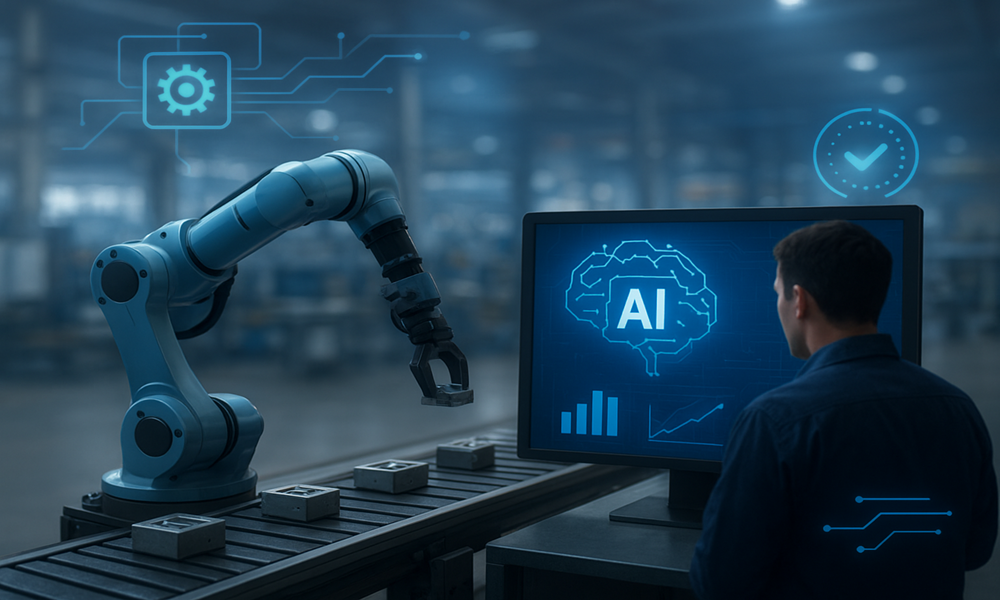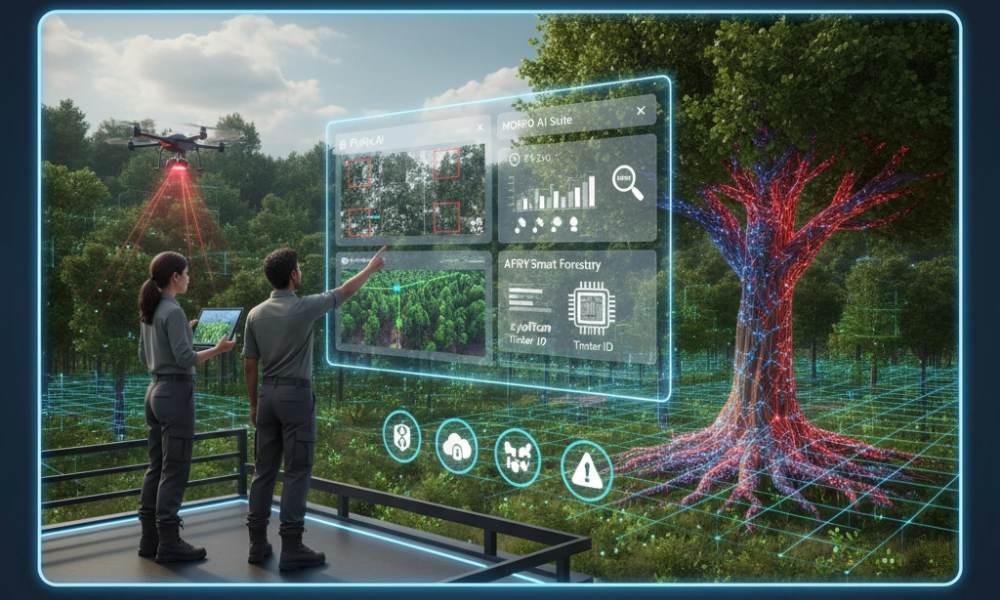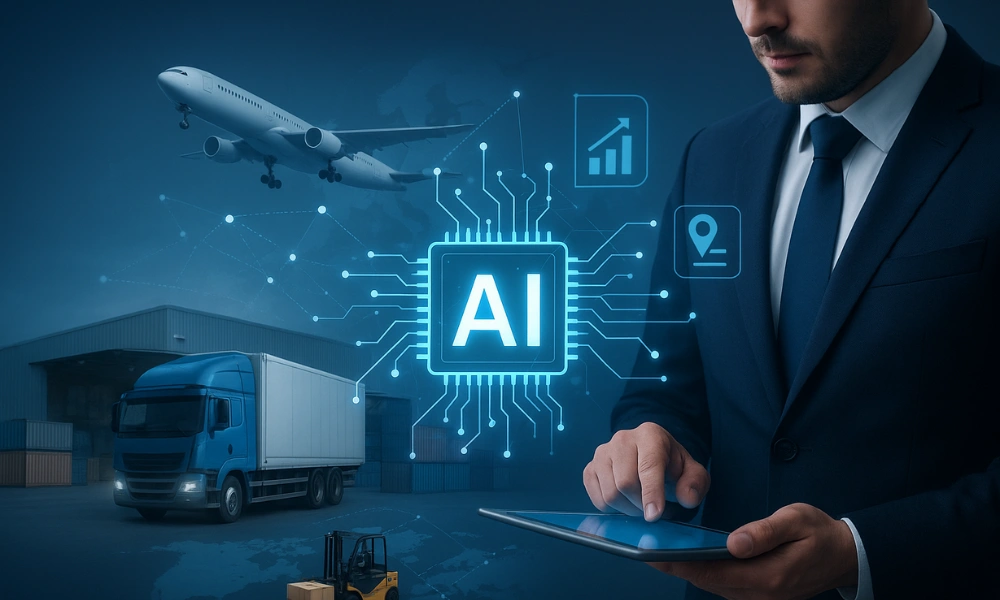
AI in Manufacturing: From Competitive Edge to Industry Need
- September 22, 2025
- Top Search
- 9:37 am

Quick Overview
AI in manufacturing has now become a competitive advantage and a survival imperative. While early adopters are already cutting costs, improving quality, and making AI fluid, those lagging behind risk losing customers, contracts, and entire markets. The window for alternative adoption is rapidly closing.
AI in Manufacturing: From Benefit to Necessity
Not long ago, the use of artificial intelligence (AI) on the shop floor was a bold sign of innovation. Today, it’s becoming something else entirely: a standard that separates manufacturers ready for the future from those left behind.
Early adopters are no longer experimenting—they’re delivering measurable results. They’re reducing downtime, improving quality, and reducing waste, steadily widening the gap between themselves and the holdouts. What was once a competitive edge is quickly turning into a table stake.
Why AI Matters Now
The manufacturing industry has seen its share of buzzwords—“Industry 4.0,” “smart factories,” “digital transformation.” But AI isn’t just hype. It’s solving tangible problems every day:
Detecting subtle quality issues missed by humans and rule-based systems.Predicting equipment failures before they disrupt production.Identifying hidden inefficiencies in vast process datasets.
Even small deployments can yield big returns. A single AI-powered inspection system can prevent defective batches and pay for itself in months. Predictive maintenance models can save millions by eliminating costly downtime.
But as adoption spreads, these benefits stop being exceptional. They become the baseline. If your competitor reduces scrap by 15% with AI or reduces setup delays, that’s their edge – unless everyone else does the same. Then it’s just the cost of doing business.
The “wait and see” illusion
Some manufacturers, especially in capital-intensive or low-margin sectors, still view AI as an option. That’s dangerous.
AI isn’t just about internal efficiency—it’s reshaping expectations up and down the value chain. Customers accustomed to defect-free, fast-turnaround parts from AI-powered suppliers won’t tolerate slower, less accurate alternatives. Procurement teams are becoming data-savvy, and they’re starting to view the absence of AI not as a neutral, but as a liability.
Change is gradual—until it happens. And when it does, late adopters won’t be able to gain ground, they’ll be scrambling to survive.
From Pilots to Real Impact
AI adoption is not plug-and-play. It requires data infrastructure, system integration, and cultural change. Too many companies get stuck in “pilot refinement” – running proofs of concept that never make it into operations.
Common mistakes include:
Targeting the wrong problems – problems that no initiative has ever solved.
Underestimating data requirements.
Treating AI as a special project rather than a core business.
Companies that are moving forward see AI as operational, not experimental. They give real ownership to engineers and operators and focus on embedding solutions into daily workflows.
Building AI Fluency
Another distinction is emerging – not just who uses AI, but who uses it well.
Running a pilot is one thing. Building internal fluency – finding valuable use cases, managing data flows, interpreting results, and acting on insights – is another. Companies investing in fluency today are building sustainable capabilities that competitors can’t replicate overnight.
This isn’t about hiring dozens of data scientists. It’s about enabling cross-functional teams – engineers, operators, and quality specialists – to work effectively with AI tools. This is the difference between AI as a one-time project and AI as an ongoing source of value.
Final Window
Like automation in automotive, AI adoption is taking a turn. Once adoption crosses a certain threshold, laggards don’t just lag behind—they fall behind. Without AI, meeting quality, traceability, and compliance requirements will soon be impossible in many markets.
The time to act is never too late. It’s now.
Practical next steps
Start with the painful issues. Focus on problems that cost money, time, or reputation and that can be solved with existing or achievable data.
Avoid moonshots. Incremental, scalable wins beat flashy experiments that never leave the lab.
Invest in readiness, not perfection. You don’t need complete systems—just clear ownership, buy-in, and the willingness to iterate.
Put AI to work. Move from pilots to production. Set KPIs. Integrate solutions into workflows.
Plan for scale. Think beyond a successful model. Build a flexible platform that supports multiple use cases across sites.
The Final Word: Who Owns the Future?
AI in manufacturing isn’t about chasing futuristic visions. It’s about solving long-standing problems – defects, downtime, inefficiencies – with tools that are powerful enough to finally make a difference.
Leaders have already understood this and are moving forward. For everyone else, the real question isn’t whether AI will be necessary – it’s whether you’ll be ready when it’s needed.
Related Blog
AI farming tools like Plantix, John Deere See & Spray, and Climate FieldView boost yields, cut costs, and support sustainable farming despite challenges like cost and data privacy.
Best AI Farming Tools in 2025: How Artificial Intelligence Farming is Transforming Agriculture
FAQs
AI improves efficiency, reduces defects, prevents downtime, and is quickly becoming essential for staying competitive in global markets.
AI systems detect defects with greater accuracy than humans, ensuring better product quality and fewer returns or recalls.
Key uses include predictive maintenance, AI-driven inspections, production planning, demand forecasting, and process optimization.
No. Even small-scale AI deployments can deliver rapid ROI, often paying for themselves in months by reducing scrap and downtime.
Delays in adoption can mean loss of competitiveness, inability to meet customer expectations, and exclusion from future supply chains.
Quora Insight
- What are the top benefits of using artificial intelligence solutions for businesses?
- What industries will be most impacted by AI automation in the next 5 years?
- Will AI take over human jobs in the future? If yes, which industries will be most affected?
- What are the impacts of AI on manufacturing sector in India?
- What are the ways AI is being used in manufacturing to provide a competitive advantage?

Recent Posts:


Forest Management Software & AI Tools: Smarter Solutions for Sustainable Forestry


